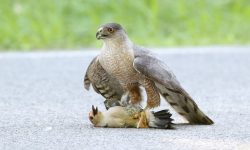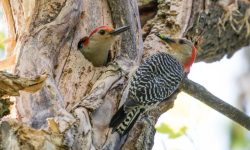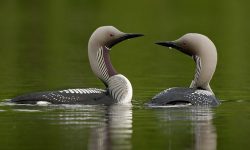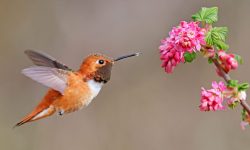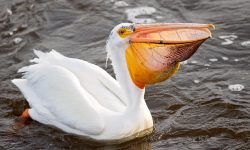Sparrows are small, energetic birds that have adapted to a wide range of environments—from rural fields and woodlands to bustling city streets. Understanding what sparrows like to eat most can help birdwatchers, backyard enthusiasts, and conservationists better support these resilient songbirds. Their diet varies with habitat, season, and availability, but certain food types consistently make up their favorite meals.
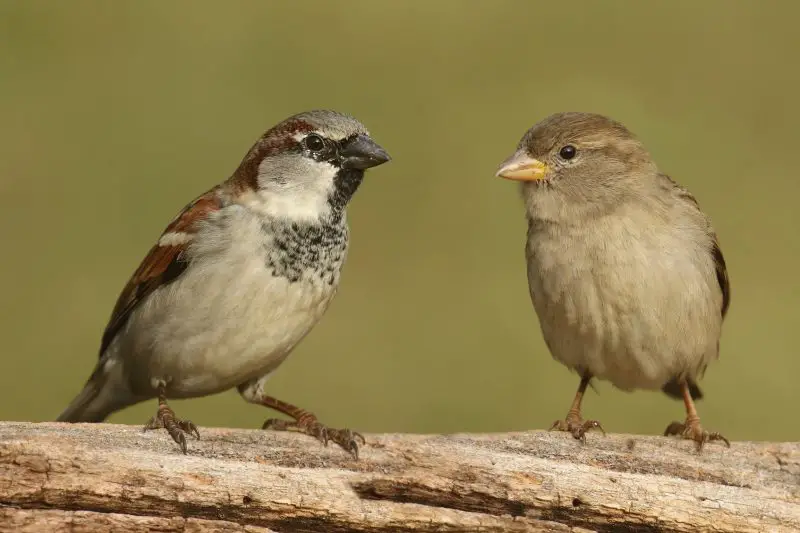
Natural Diet of Sparrows
Seeds and Grains: The Foundation of Everyday Feeding
Seeds form the backbone of a sparrow’s daily diet, especially for adult birds outside the breeding season. Equipped with short, conical beaks designed for maximum cracking efficiency, sparrows can rapidly husk even the smallest seeds. These tough little foragers are specialists at exploiting seed-rich environments, whether in open fields, meadows, farmlands, or overgrown urban lots.
In the wild, their favorite seed types include:
-
Grass seeds like timothy, foxtail, crabgrass, and barnyard grass, which offer abundant energy and are often scattered along roadsides or in neglected patches of vegetation
-
Millet—a tiny grain frequently sought by ground-foraging species like the House Sparrow and White-crowned Sparrow
-
Wild oats and barley, particularly around agricultural edges or harvested fields
-
Thistle and sunflower seeds (especially the smaller, softer varieties), which are rich in oils and help fuel long migratory flights
Sparrows typically forage on the ground or in low vegetation, scratching gently with their feet or flicking through leaf litter and grass stems. Their keen eyesight helps them spot tiny seeds that other birds might overlook. These carbohydrate- and fat-dense morsels are especially important in colder months, when sparrows must consume more food to maintain their high body temperature and energetic lifestyle.
Insects and Arthropods: Essential Seasonal Protein
While sparrows are often thought of as seed-eaters, their dietary needs shift dramatically during the breeding season. To support egg formation, chick development, and feather molting, sparrows rely heavily on protein-rich invertebrates.
Some of the most commonly consumed arthropods include:
-
Soft-bodied caterpillars, which are easy for young chicks to digest and are rich in amino acids
-
Aphids, often harvested directly from leaves and stems
-
Crickets and grasshoppers, which are snapped up from grassy patches
-
Beetles, especially larvae hidden beneath leaves or inside decaying wood
-
Spiders and mites, consumed for both protein and hydration
-
Flying insects like gnats, midges, and mosquitoes, which agile sparrows can snatch in midair during active swarms
This protein surge supports the rapid growth of nestlings, which may double their weight in just a few days. Adult sparrows switch to a more active hunting style during this period, darting through shrubs, fluttering through grasses, and even hovering briefly to glean prey from foliage. Some species, like the Song Sparrow, are particularly adept at locating insect hotspots near water or compost-rich soil.
This dietary flexibility gives sparrows a competitive advantage across diverse ecosystems, allowing them to thrive in both wild and urbanized environments.
Urban and Suburban Diet
Human Food Scraps: A Double-Edged Adaptation
In heavily developed areas, sparrows have become expert urban foragers, taking full advantage of the waste and food remnants generated by human activity. Their presence near outdoor cafés, parks, markets, and sidewalks is no accident. These birds are remarkably opportunistic and will feed on a variety of discarded items, including:
-
Breadcrumbs and sandwich crusts, often scavenged directly from picnic tables or pavement
-
Cooked rice, pasta, and noodles, which are especially attractive in regions with high outdoor food consumption
-
Crackers, biscuits, and pastry crumbs, broken into manageable pieces by the sparrows’ quick pecking
-
Cereal flakes and dry granola, high in carbohydrates and easy to consume
-
Potato chips and snack fragments, though these salty, processed items are nutritionally poor and potentially harmful in excess
This dietary shift illustrates the incredible adaptability of sparrows. However, an overdependence on refined human foods can lead to imbalanced nutrition, lacking essential proteins, amino acids, and trace minerals necessary for proper feather development and reproductive success. Despite this, urban sparrows continue to thrive, taking advantage of consistent food availability even in concrete-dominated landscapes where natural seeds and insects are scarce.
Backyard Gardens and Bird Feeders: A Supplemental Buffet
In suburban neighborhoods, sparrows are frequent visitors to bird-friendly gardens. Backyard bird feeders provide a more balanced and nutritious alternative to scavenged scraps, attracting sparrows year-round with offerings such as:
-
White millet, a favorite among House Sparrows, Chipping Sparrows, and Song Sparrows
-
Cracked corn, which offers both energy and bulk, especially in winter
-
Sunflower chips (hulled seeds), rich in fats and easier for small-billed species to eat
-
Nyjer seed, which is particularly attractive to smaller sparrow species, although they often compete with finches for access
Sparrows are also known to forage directly from vegetable plots and beneath fruit-bearing trees, where they peck at fallen produce like figs, berries, and soft apples. Their behavior isn’t limited to seeds and fruits—these observant foragers also feed on garden insects such as aphids, leafhoppers, and small caterpillars. In doing so, sparrows play a modest but beneficial role in natural pest control, quietly helping gardeners maintain ecological balance.
These feeding habits highlight sparrows’ ability to bridge the gap between wild and human-altered ecosystems, sustaining themselves through a combination of instinct, observation, and ingenuity.
Seasonal Changes in Diet
Spring and Summer: A Surge in Protein and New Growth
During spring and summer, sparrows shift their focus toward protein-rich food sources to meet the high-energy demands of reproduction and chick-rearing. As the temperatures rise and insect life explodes, sparrows begin to supplement or even temporarily replace their seed-based diet with a wide array of invertebrates.
This seasonal adjustment is particularly vital for breeding females and rapidly growing nestlings. Adult sparrows hunt soft-bodied insects such as caterpillars, grasshoppers, beetles, and aphids, plucking them from stems, leaves, and even midair. These protein-packed meals support egg development, feather formation, and skeletal growth in chicks.
In addition to insects, sparrows also consume tender green shoots, flower buds, and newly sprouted seeds, which provide vitamins and moisture during the wetter months. This opportunistic foraging allows sparrows to maximize nutrition at a time when natural abundance is at its peak.
Autumn and Winter: Seeds for Survival
As the seasons change and insect availability declines, sparrows revert to a predominantly seed-based diet. Autumn brings a fresh wave of wild seeds as grasses and herbs dry and go to seed. Sparrows scour open fields, roadsides, and backyard lawns in search of fallen grains, weed seeds, and plant husks.
Common winter seed sources include:
-
Foxtail and timothy grass seeds, which persist through frost
-
Thistle and ragweed seeds, often found in disturbed habitats
-
Grain residues from harvested crop fields, such as oats, wheat, and millet
-
Spilled or leftover birdseed, frequently discovered beneath feeders
In colder climates, high-fat seeds like sunflower kernels become essential. These energy-dense foods provide the calories needed to fuel thermoregulation, keeping sparrows alive through freezing nights and snow-covered days.
Even in winter, sparrows remain industrious and adaptable. They may cache seeds in hidden spots or return to previously found food sources. Their remarkable dietary flexibility ensures that they can remain year-round residents in a wide range of habitats, from temperate woodlands to bustling cityscapes.
Unique Feeding Behaviors
Ground Foraging Techniques
Sparrows are quintessential ground foragers, exhibiting a range of behaviors that reflect both instinct and environmental adaptation. They typically search for food by hopping or walking in short bursts across open soil, leaf litter, or grassy patches. Using quick, alternating foot motions, they scratch at the surface in a behavior known as double-scratching, which helps unearth buried seeds or hidden insects.
This method is especially effective in areas with loose topsoil, mulch, or dry foliage, where seeds may accumulate naturally. Sparrows also explore beneath shrubs, hedgerows, or bird feeders, where dropped food is often plentiful. Foraging in small groups or loose flocks offers multiple benefits: it enhances the likelihood of finding food while allowing members to share alert signals when predators like hawks or cats approach.
Beak Adaptation for Selective Feeding
The sparrow’s beak is one of its most distinctive tools for survival. It is short, stout, and cone-shaped—a classic example of a granivorous (seed-eating) adaptation. This structure allows sparrows to exert significant pressure to crack open hard seed husks efficiently while maintaining enough dexterity to pluck tiny insects or eggs from narrow crevices in bark or leaves.
Though designed for seeds, the sparrow’s beak is also surprisingly versatile. During the breeding season or while feeding chicks, sparrows use their beaks to capture live insects with swift precision, adjusting their feeding style depending on food availability. Some species, such as the House Sparrow (Passer domesticus), are even known to modify their grip and feeding angle based on seed shape and texture—demonstrating learned behavior and fine motor control.
Together, these feeding behaviors and anatomical traits underscore the sparrow’s status as a highly adaptive, opportunistic feeder capable of thriving in diverse environments—from rural grasslands to the heart of bustling cities.
Foods to Avoid Feeding Sparrows
While sparrows are remarkably adaptable and often forage on human leftovers, not all food scraps are safe or healthy for them. Providing the wrong items can lead to nutritional deficiencies, digestive issues, or even toxicity.
Nutrient-Poor Fillers
White bread, crackers, and processed cereals may seem harmless, but they are essentially empty calories for sparrows. Bread can swell in the digestive tract and offers little to no protein, fat, or vitamins—nutrients essential for maintaining energy, feather condition, and immune function.
Sugary and Salty Foods
Avoid cookies, pastries, chips, and salted seeds. High sugar levels can disrupt a bird’s metabolism, while excessive salt can lead to kidney strain and dehydration. Even small amounts of seasoned human snacks can be harmful to a bird’s sensitive physiology.
Toxic and Dangerous Substances
Some common household items are outright toxic to birds, including:
-
Chocolate – contains theobromine, which is poisonous to birds
-
Artificial sweeteners (especially xylitol) – can cause rapid insulin release and liver failure
-
Spoiled or moldy food – molds produce mycotoxins that may be fatal when ingested
These substances should never be placed near bird feeders or accessible outdoor spaces.
What to Offer Instead
Stick to natural, unsalted seeds like millet, cracked corn, sunflower hearts, and nyjer. Offering a shallow dish of clean water is equally important, particularly in hot or dry weather when hydration is crucial.
By avoiding harmful foods and offering nutritious alternatives, you support sparrows’ health while promoting safe, responsible backyard bird feeding practices.
Role of Diet in Sparrow Health and Ecology
How Nutrition Shapes Vital Functions
A sparrow’s diet is not just about energy—it underpins nearly every aspect of its biology. Nutrient-rich food fuels their high metabolism, sustains feather regeneration, and fortifies the immune system against pathogens. During the breeding season, adequate protein and fat intake is essential for egg production, chick growth, and successful fledging. In contrast, nutrient-poor or heavily processed diets—common in urban environments—can result in weakened immune responses, dull or incomplete molting, and reduced reproductive output.
Chicks raised on inadequate protein sources often show slower development and lower survival rates, especially in competitive nesting environments. Adult sparrows on poor diets may suffer from shortened lifespans, lower mating success, and higher vulnerability to disease and environmental stress.
Ecological Roles of Sparrows in Their Habitat
Sparrows are more than just seed-eaters; they are active contributors to ecosystem balance:
-
Insect Control: By consuming aphids, caterpillars, and other pests, sparrows help regulate insect populations, particularly during the breeding season when their protein needs spike.
-
Seed Dispersal: Many seeds consumed by sparrows pass through their digestive systems intact. This natural process helps in plant propagation, contributing to vegetation renewal in disturbed or recovering areas.
-
Food Web Integration: Sparrows are an important prey species for hawks, shrikes, foxes, and snakes, playing a key role in supporting healthy predator populations and maintaining trophic structure in both urban and rural landscapes.
Conservation Through Diet Awareness
Ensuring sparrows have access to nutritionally complete, natural food sources helps maintain these critical ecological roles. Supporting their dietary needs—whether through native plantings, clean feeders, or preserving foraging grounds—directly impacts population stability, biodiversity, and ecological health.
Conclusion
Sparrows are versatile eaters, but their favorite foods revolve around small seeds, insects, and easily accessible grains. Whether foraging in fields or exploring city parks, they adapt their diet to meet energy needs and environmental changes. By understanding what sparrows like to eat the most, we can better appreciate these resourceful birds and contribute to their conservation—one seed at a time.

